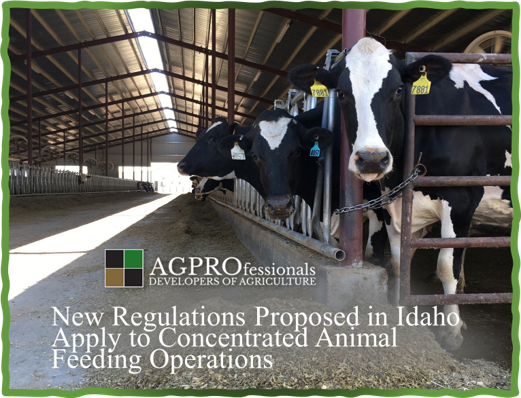On July 18, 2023, the Environmental Protection Agency ( EPA ) submitted new proposed modifications to the National Pollutant Discharge Elimination System (NPDES) permit requirements. At this time, Region 10 of the EPA has tentatively determined to make the proposed modifications.
The comment period to respond and give feedback was open until September 1, 2023.
Now, we wait for the findings and the final rule.
Here’s What You Need to Know
The EPA’s proposed modifications involve the establishment of monitoring conditions for the following discharges involving “waters of the United States”:
- Subsurface discharges of pollutants from production areas
- Dry weather surface and subsurface discharges from land application areas
Details
Listed below are highlights of the new regulations. The following actions must be taken if runoff or discharge from land application area impacts “Waters of the United States”:
Monitoring the following discharges, which will be sampled and analyzed:
- Dry weather discharges resulting from land application of manure, litter, or process wastewater, including discharges through tile drains, ditches, or other conveyances, and irrigation return
- Stormwater or snowmelt runoff or discharges of manure, and litter that has not been applied in accordance with site-specific nutrient management practices that ensure appropriate agricultural utilization of the nutrients in the manure
A monitoring plan and log must be instituted that includes site-specific information which includes:
- Identification of the structures and/or locations to be monitored
- A routine monitoring plan, including specific details about the technology and protocols used, must be established to identify leaks, damage, and other issues that could cause a subsurface discharge
- A log that documents the condition of receiving ambient waters must be kept. Conditions that must be recorded in the log include any discoloration bottom deposits, condition of any aquatic life observed, the presence of visible films, sheens, or coatings; fungi, slimes, or objectionable growths; and potential nuisance conditions
Analysis Process:
- Representative samples of the discharge must be collected at an area prior to its mixing with the receiving waters
- Representative samples of the discharge mixed with receiving waters must be collected as well
- Documentation of the area of collection, sampling, and analysis must follow all regulations for sampling and testing as outlined by the EPA
- The analysis must check for total Kjeldahl nitrogen (TKN), nitrate nitrogen, nitrite nitrogen, total phosphorus, E. coli, fecal coliform, and five-day biochemical oxygen demand (BOD5)
Other Discharge Events:
There are other discharge events that must be monitored, whether they fall under the specific permit or not. These include an accidental overflow or other discharge from manure or wastewater storage.
If this occurs, the following actions shall be taken:
- All discharges from wastewater or manure storage structures to “Waters of the United States” shall be sampled and analyzed
- Samples must be analyzed following EPA regulations for the following parameters: total nitrogen, nitrate nitrogen, ammonia nitrogen, total phosphorus, E. coli, five-day biochemical oxygen demand (BOD5), total suspended solids, pH, and temperature
We Don’t Believe This New Language is Necessary
Based on our over 20 years of experience offering compliance services for dairies and other large modern farms, we believe this new language is completely unnecessary. In Idaho, the Department of Environmental Quality (IDEQ) had previously established regulations that were as stringent or more stringent than what is outlined; therefore, new 401 certification will not be required to remain in compliance.
Despite this fact, we always encourage producers to be aware of changing regulations so you can either proceed with confidence that you are in compliance or make the necessary changes in order to comply.
The Idaho DEQ Has a Memorandum of Understanding
Currently, IDEQ has a MOU with the Idaho State Department of Ag (ISDA) for CAFOs and reviewing Nutrient Management Plans (NMPs). That means that the Idaho State Department of Agriculture (ISDA) is the regulator for dairies and finishing yards. ISDA has a good understanding of agriculture in Idaho and the regulations, which has proved to be successful in managing the regulatory program over dairies and feedlots.
AGPROfessionals Are Here to Help
While we feel the new language is unnecessary, we are also aware that there could be additional requirements once the NPDES (National Pollution Discharge Elimination System) rules are implemented. We question whether the MOU will stay in place. The EPA has not been clear about the impact and enforcement of their new language, which is typical. We are going to keep an eye on EPA activities and language and will make sure to keep producers updated.
If you have questions about this new language or need our expertise to ensure your farm complies, AGPROfessionals is here to help. Lately, we have been very busy in Idaho working with dairies and feed yards on nutrient management planning, land use permitting, and facility design.
Link to review the updated language as submitted by the EPA: HERE HERE and HERE
Link to Memorandum of Understanding: HERE

